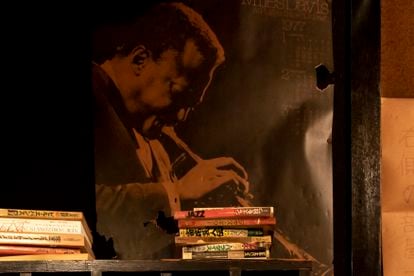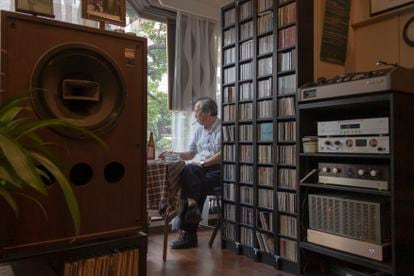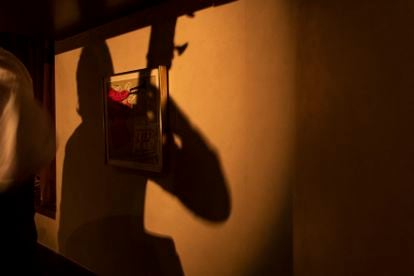On July 14, 1964, Miles Davis began his tour in Japan with a concert in which he was accompanied by Wayne Shorter, Herbie Hancock, Ron Carter and Tony Williams. The concert was recorded and later released under the title Miles in Tokyo and went on sale in 1969 only in Japan. That was one of the most legendary tours in the history of jazz, but the beginning of the romance between this musical genre and the Japanese country began earlier.
“I think there are two very relevant moments that can explain the love that certain Japanese people feel for jazz,” says photographer Philip Arneill, born in Belfast and who lived in Japan for 20 years. “The first is, obviously, World War II. The American occupation until 1952. The soldiers brought records and many locals heard jazz for the first time. The second is the Art Blakey tour in 1961. Blakey didn't just go to Tokyo: he played everywhere.”

The jazz kissa are the Japanese bars where jazz is worshiped and which—in turn—Arneill worships in his book, Tokyo Jazz Joints (Kehrer). The volume is a way of approaching a phenomenon that became popular in the West thanks to the success of Haruki Murakami. The Japanese writer is a fan of jazz and Thelonious Monk, John Coltrane and Davis himself appear in his work.

Philip Arneill (Kehrer Publishing House)

Thanks to these references, many became interested in the sophisticated yet strange combination between Japan and jazz. “Imagine the sixties. Young people didn't have money to buy audio equipment, so they went to bars to listen to music and at that time jazz was in fashion. Look, I just got back from Nagasaki and I was in a bar covered in photos of the owner with Sonny Rollins [risas]. This work by Jazz Kissa is a work in progress that I will never finish,” he concludes.
Subscribe to continue reading
Read without limits
_
#Smoke #trumpets #hifi #fascinating #Japanese #jazz #bars